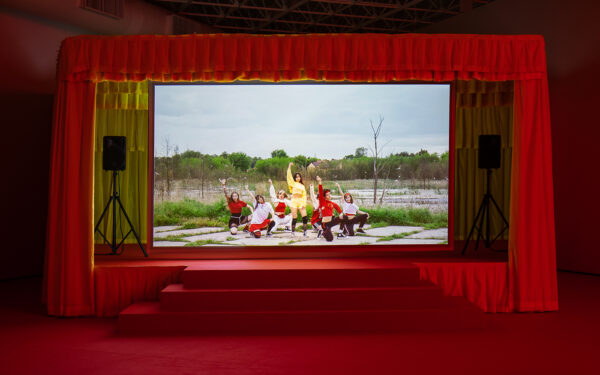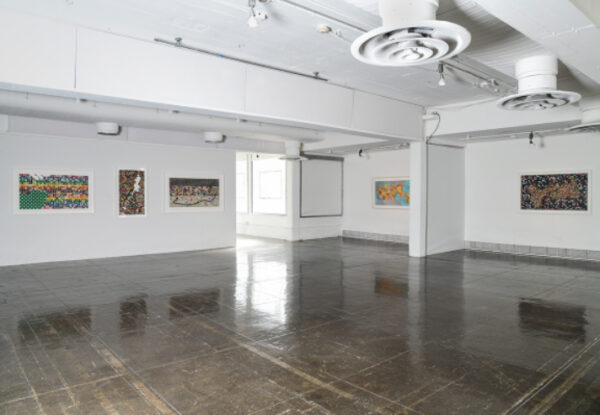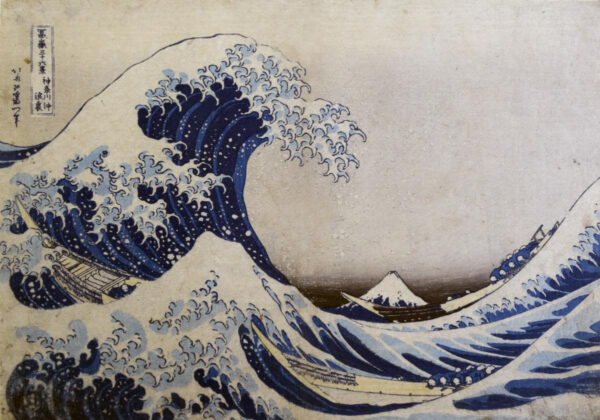Glasstire counts down the top five art events in Texas.
For last week’s picks, please go here.
1. Life and Death: Luis Jiménez
Gallery at UTA (Arlington)
January 23 – April 1, 2023
From the Gallery at UTA:
“Life and Death: Luis Jiménez is an exhibition of 35 works by the late, internationally known artist Luis Jiménez who was born in El Paso, Texas and died in Hondo, New Mexico in 2006. The works range in date from 1973 through 2001, and include his sketches, studies, drawings and prints that he created to work through ideas that culminated in his famous large-scale sculptures. The exhibition also includes maquettes, four final concept prints for his famous Progress Suite of which only two were completed as sculptures, and a wall-size drawing/painting of Fiesta Dancers.
Guest curators Benito Huerta and Christina Rees have borrowed a wide array of Jiménez’s works from galleries, museums, and private collections throughout the region. Known for his large and colorful fiberglass sculptures, Jiménez also used painting, drawing, and printmaking to address social and political issues and explore the cultures of Mexico and the southwestern United States. After considering hundreds of pieces, Huerta and Rees noted several broad motifs they used as an organizing force and have gathered a robust set of works that encompass Jiménez’s themes including immigration, car culture, ‘the West,’ everyday life, and mortality.”
2. Diane Severin Nguyen: IF REVOLUTION IS A SICKNESS
Contemporary Arts Museum Houston
October 28, 2022 – February 26, 2023
Read our review here.
From the Contemporary Arts Museum Houston:
“Diane Severin Nguyen: IF REVOLUTION IS A SICKNESS is the first solo museum exhibition of artist Diane Severin Nguyen. The exhibition features a recent video installation, photographs, and the artist’s first public art commission through billboards located throughout Houston. The exhibition is built around the Warsaw-set titular video, IF REVOLUTION IS A SICKNESS, and loosely follows the character of an orphaned Vietnamese child who grows up to be absorbed into a South Korean pop-inspired dance group. K-pop is used by the artist as a vernacular material to trace a relationship between Eastern Europe and Asia with roots in Cold War allegiances. Nguyen’s work reckons with the process of finding shared symbols and naming oneself from within another’s regime, while also positioning youth culture as a critical and crucial site of revolutionary power.”
3. Since Last We Met
Artpace (San Antonio)
January 12 – April 30, 2023
Read our review here.
From Artpace:
“Lordy Rodriguez was an Artpace International Artist-in-Residence in 2001. Now, 22 years later, Rodriguez returns to Artpace with a selection of artworks he’s created since his residency. Since Last We Met, as the title suggests, is a conversation between friends, and like the artwork in his oeuvre, it is a play on place and memory. The exhibition consists of a variety of ink drawings that utilize alcohol-based inks and Micron pens to create what appear, at first glance, as maps. For example, Since Last We Met includes a selection of work from his America Series, composed of 56 drawings that took about ten years to complete. This series became a map of America based on Rodriguez’s own history, interaction, and memory of this country and culture.”
4. Floating Beauty: Women in the Art of Ukiyo-e
International Museum of Art and Science (McAllen)
February 4 – May 28, 2023
From the International Museum of Art and Science:
“Floating Beauty: Women in the Art of Ukiyo-e examines the historical perspectives on the depiction of women in art during the Edo Period in Japan (1615 – 1858). This exhibition highlights female characters painted on woodblock prints, all created in the ukiyo-e style. The prints show women in literature, kabuki theatre, poetry, and courtesans as well as geishas of the Yoshiwara district. Wives and mothers from different social classes performing the duties of their station are also portrayed in the woodblocks in order to give us insight into the lives of women in pre-modern Japan. In the tradition of ukiyo-e, women are most often represented in the bijinga (“pictures of beautiful women”) genre. This was the passive, attentive, and demure idea of feminine beauties.
Looking beyond the bijinga though, the exhibition shows that women in Edo society took an active role in their own lives, and this fact is echoed through literature and drama of the period. Over fifty woodblock prints are featured in the exhibition which include works by ukiyo-e masters Kitagawa Utamaro, Suzuki Harunobu, Utagawa Kunisada, Katsushika Hokusai, Utagawa Hiroshige and Kikugawa Eizan. The entire exhibition is taken from the permanent collection of the Reading Public Museum.”
5. Gary Burnley: Stranger(s) in the Village
Amarillo Museum of Art
January 14 – March 26, 2023
From the Amarillo Museum of Art:
“Gary Burnley (b. Saint Louis, Missouri) creates physical collages and stereographic devices that encourage dissociated images to merge in the eye and mind of the viewer. Resulting in optical rivalries that explore representation, memory and an image’s meaning through contrast, his amalgamations imagine strange bedfellows congruent for moments in time, space and reason.
The world of most Western museums was created for and is meant to be consumed by white audiences. The history of art has largely reduced ‘Others’ to an uncomplicated characterization of a stranger in the world of the white man’s imagination, a shadowy figure without a gaze, a presence or a voice. Whiteness is and has been the exemplar of beauty, curated, maintained and preserved in museums, excluding non-whites except in reference to a vanishing past or less than desirable future.
I think of being an artist as a way of trespassing where historically ‘Others’ have not been welcomed nor seen as belonging. If one of the primary functions of any image is to validate and give permanence to the world it describes and to the persons that inhabit that world, the physicality of collage allows me to, materially and psychologically, construct a world of my specification.”







